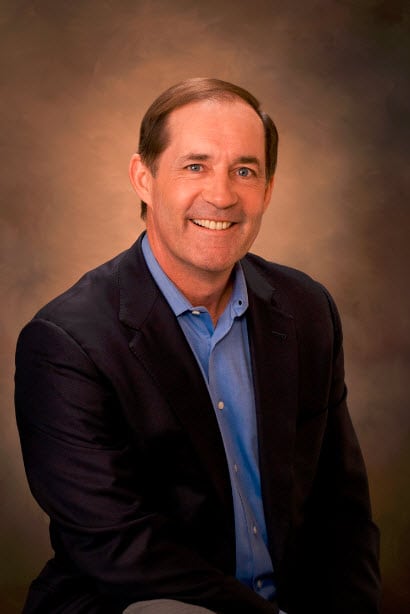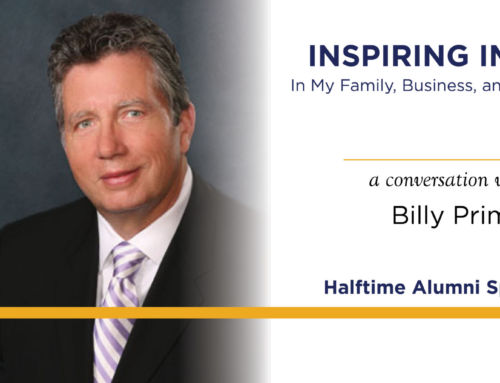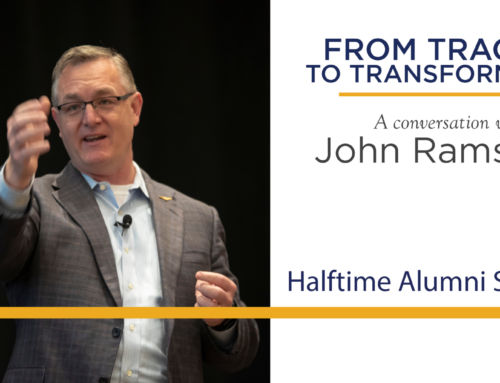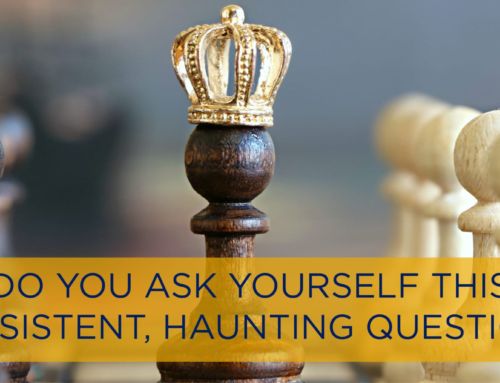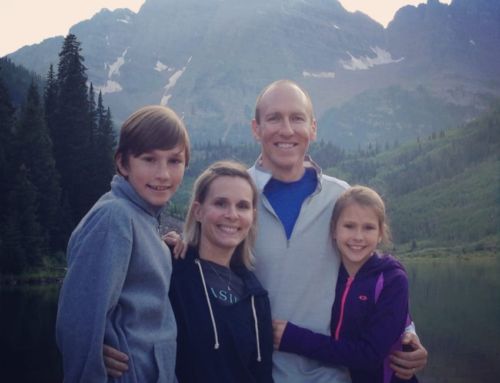Joe Sweeney epitomizes the expression, “that guy could write a book.” Even a quick look at his bio provides more than ample underpinnings.
“I’ve been blessed to be able to combine a love of business with a passion for sports,” Joe says of his 32 years of starting and leading ventures in investment banking and sports management, including representing professional athletes like Brett Favre.
But unlike most about whom the book-writing wish is usually only casually or jokingly tendered, Joe has done it – in fact, twice now – and quite successfully.
His first book, Networking Is a Contact Sport made The New York Times best-seller list. And the recently released second one, Moving the Needle, follows a five-year period of being in high demand to share his insights on leadership and life-planning in hundreds of speaking appearances and with organizations as diverse as the Navy SEALs, the University of Wisconsin NCAA Final Four mens’ basketball team, and General Electric.
In fact, the demand for his time has been so strong that Joe is now focusing mostly on his “passion” — speaking, consulting, and training engagements nationally and internationally. But he has also not “quit his day job,” as he is still the strategic adviser of the company he formerly owned, Corporate Financial Advisors, LLC, a middle-market investment banking firm which specializes in providing merger and acquisition advisory services, capital sourcing, exit planning, and general corporate advisory services. He also serves on seven boards of directors (the current crop of among 28 boards on which he has served over the past 30 years).
Perhaps most remarkable about Joe’s transition to writing, speaking, and training is that it all started very humbly about five years ago – with an attempt to share a legacy of some life lessons with his four children. His motivation flowed in part from reading Bob Buford’s Halftime several years ago.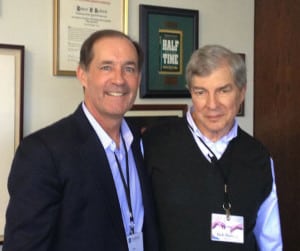
Today Joe and Bob are personal friends, and Joe not only is an alum of the Halftime Institute, but is himself currently in the Halftime Fellows Program. But in 2001, all Joe knew about Bob and the Halftime Institute was from a friend in his Milwaukee, WI, area home base, who recommended the Halftime book.
“I was kind of hitting some sharp points in my journey…I thought it was one of the best life planning books ever,” Joe says, recalling the questions at the end of the book. “I answered every question and wrote 39 pages beyond that,” he adds.
It was from that experience of taking time not only to answer the questions, but to write in detail about his life and passions, that Joe embarked on writing for his children 14 one-page “chapters of my life: what I did, why I did it, and what I learned from it.” Perhaps more than coincidentally, there also was a moving experience around that same time of “happening” upon a book of life lessons that had been written by a close friend’s father who was a very successful father and grandfather.
Joe’s compo sitions were just very heartfelt personal missives to his family – with the only initial result of attaching them to his will.
sitions were just very heartfelt personal missives to his family – with the only initial result of attaching them to his will.
“I certainly didn’t intend to publish anything,” he says. At least the thought didn’t occur to him until he jokingly shared with some friends that he had written “a book” for his children. After hearing some examples of the contents, Joe’s buddies suggested that what he had shared with his children would benefit a much broader audience.
“I’m not a writer, and I didn’t know where to start,” Joe says. But the 39 pages of insights gained and written with the inspiration of Bob Buford’s Halftime “gave me the confidence and courage to write the first book,” Joe says, adding he’s given out hundreds of copies of Halftime during his speaking appearances.
“My life changed drastically five years ago when I reflected on what I have done and accomplished in 25 years of business,” Joe says. “What I realized, and what I wanted to be sure to teach my kids was the one common thread through everything that I had done – it was about networking and connecting with others.”
A key principle of the book is “networking is a place we go to give and serve and not a place that we go to just GET. Networking is really about how we serve others in the community, workplace, and family. It is really about helping others get what they want. Most of us think networking is getting something for ME! I just don’t think it works too well that way!” Joe says.
And while his first b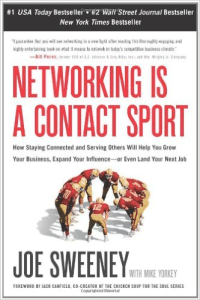 ook was very well received, Joe quickly realized there was more to do. “After 100 talks, I realized people wanted someone to come in and ‘move the needle’ — in other words, change human behavior.”
ook was very well received, Joe quickly realized there was more to do. “After 100 talks, I realized people wanted someone to come in and ‘move the needle’ — in other words, change human behavior.”
Moving the Needle, focuses on helping anyone – from CEOs, to athletes to students, even Navy SEALs transitioning to civilian life – move forward with positive rituals and systems. Here, too, the Halftime experience was foundational for Joe, who built some of Moving the Needle’s framework from a coaching lesson from his first Halftime coach, Dick Gygi. At one point, Dick encouraged Joe to “get clear, get free, and get going.”
At the time, Joe used Dick’s words to get unstuck with his own challenges of balancing between running his business and pursuing his relatively new passion of writing, speaking, and coaching.
Later, he carried it forward into the book. Get clear, get free, and get going “is really a framework to be incorporated into daily living,” Joe says, along with the many exercises and tools the book contains to support the successful development of practical life skills.
“The whole idea is a five-step process to help you manifest anything you want in your life, complete with a worksheet focusing on five areas you want to accomplish or grow in and who will support you,” Joe says.
The worksheet and book focus not only on “What’s your goal? But why?” Joe says, adding that asking why is important, with people needing to discover if their “why” for a goal is “big enough” to motivate and justify their pursuit of it.
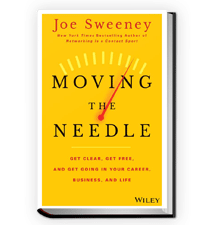 He cites an example of listening to a Navy SEAL who joined the military after 9/11 and the process he went through to persevere through the training. And, Joe says, “make no mistake, the training is sheer torture.” Also, the SEAL knew only a very few of the hundreds who enter the program ever complete it. The SEAL’s “why” was his personal tie to families who lost loved ones on 9/11. “Any time I experience pain, I think about all of those people dying,” the SEAL told Joe.
He cites an example of listening to a Navy SEAL who joined the military after 9/11 and the process he went through to persevere through the training. And, Joe says, “make no mistake, the training is sheer torture.” Also, the SEAL knew only a very few of the hundreds who enter the program ever complete it. The SEAL’s “why” was his personal tie to families who lost loved ones on 9/11. “Any time I experience pain, I think about all of those people dying,” the SEAL told Joe.
“So when I speak, I ask what’s your ‘why’? Figure that out and make sure it’s a big enough why.”
As for Joe’s own journey, it’s been both a revelation and a journey going from running businesses to his current focus of public speaking, writing, and training, coaching, and consulting. “It’s been just like Halftime…you play your first half, go into the locker room and then think about the second half and why you want to play it. At 56, I feel grateful for these opportunities at this stage of life”
“This is about finding out what you’re really good at and doing it while you have your time here on this earth,” Joe says.
And that all comes back to his initial mission of “helping my kids understand” what’s important: “If you can help other people get what they want — and if you want that more than you want something for yourself and act on that, you’ll have greater rewards in life than just thinking about yourself. It’s all about giving and serving and not getting,” Joe says, citing the Prayer of St. Francis: “for it is in giving that we receive.”
“A motto I try to live by each day,” he says, is something once said by another coach, John Wooden: “You haven’t lived a perfect day UNTIL you have done something for another person who can never repay you.”
To learn more about Joe, go to his website at: http://www.joesweeney.com
Checkout Joe’s FREE Networking Success Playbook

